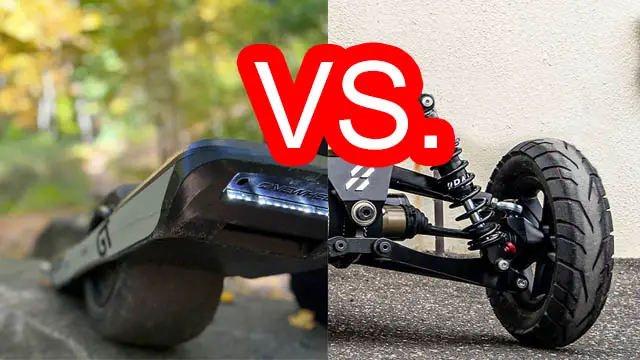
Are you on the fence about which electric rideable to get – a Onewheel or an electric skateboard? If so, this guide is for you. We’ll go over their respective features and benefits and compare them side-by-side so that you can make an informed decision on which one is right for your lifestyle. Whether it’s speed, range, portability, or price that matters most to you, we’ll cover all of these topics in detail so that by the end of this article you will be able to confidently decide on whether a Onewheel or e-skateboard is best for your needs. So let’s take a closer look at each option and see what makes them unique!
While being electric-powered, the Onewheel is not considered to be an electric skateboard. Onewheel and other PEV’s such as an electric unicycle are within their own classification.
Let’s take a deeper look at Onewheel and e-skateboards so that you can make an informed choice on which type of electric transportation is best suited to your needs.
Onewheels and Electric Skateboard Introduction
Onewheels and electric skateboards are two popular types of personal transportation devices that have gained popularity in recent years. Onewheels are self-balancing electric boards that have a single large wheel in the center and two footpads on opposite sides of the tire. They offer a unique and exhilarating riding experience that feels like snowboarding on the street.
Electric skateboards, on the other hand, are similar to traditional skateboards but have an electric motor that propels them forward. They come in a variety of shapes and sizes, and some models can reach speeds of up to 30 miles per hour.
While both Onewheels and electric skateboards offer an alternative mode of transportation that is eco-friendly and fun, there are some key differences between the two devices. For starters, the riding experience on a Onewheel is very different from that of an electric skateboard. Onewheels are self-balancing and have a single large wheel in the center, which makes them more agile. I guess you could call them a one-wheeled skateboard. The rider stands with their feet perpendicular to the wheel and uses their body weight to steer. Electric skateboards, on the other hand, require a handheld remote and for the rider to shift their weight from side to side to turn.
Additionally, Onewheels can handle rougher terrain, such as dirt or gravel, while electric skateboards are better suited for smooth surfaces such as pavement. This is due to the wheels
Ride Feel – One Large Rubber or Four Polyurethane Wheels
The main difference between both boards is the feeling of the ride. Onewheels utilize a large go-kart sized tire (approximately 11″ diameter). Its also a pneumatic tire which absorbs much of the imperfections of the terrain your on (cracks on the street, dirt, gravel, etc). Electric skateboards have four polyurethane wheels that are harder and notably smaller (typically 50mm to 60mm in size).
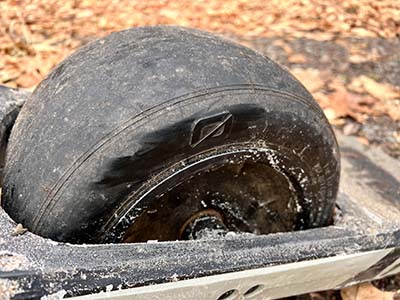
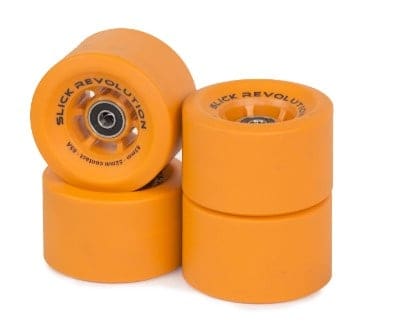
Because of the size of the Onewheel’s tire, it can overcome as well as absorb much of the debris and objects on the road. Electric skateboards are more sensitive to road objects. You can not simply roll over a rocks with an electric skateboard. Unless the electric skateboard has a suspension system and is off-road (such as a Propel board or WowGo), the polyurethane tires transfer the vibrations of the road directly to your feet.
Off-road electric skateboards do lessen the vibrations because of their suspension system and some even do come with smaller pneumatic tires (about 175mm in size). Onewheels are 60% larger than e-skateboard off-road tires and almost 4 times larger than standard 75mm wheels!
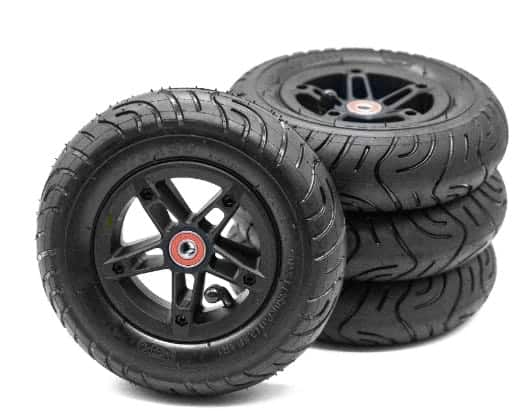
Onewheel Riders Call it Floating
Whether you are on the street or on a wooded trail, the large one wheel tire just has the ability to roll over most of the objects within its path. When you cannot roll over it, you bonk it! The ride feel is called floating by most riders because it is the closest experience on a board that simulates literally floating.
The design of the board allows for some crazy agility that is not possible with a larger off-road electric skateboard. Onewheels also have aftermarket suspension if you really want to get crazy, but even without a suspension system, the ride is Cadillac style – very smooth. There is no remote required so the rider’s hands are free. Many riders ride to destress themselves. Its mental therapy for many.
The lack of a remote makes the Onewheel feel like its an extension of your body. Its accelerometer reacts to your body movement which just makes the ride feel very intuitive and fluid.
Electric Skateboarder Go For the Intensity
Electric Skateboards require a handheld remote. You are dialing the speed in by hand. Whether you are street riding or trail riding an electric skateboard, you definitely can feel every bit of the terrain you are on more-so than on a Onewheel. Because you are not hand’s free, the ride is more involved. Selecting the a desired speed is more of a mechanical process than intuitive. For this reason, it is easier to push the board to its limits. Onewheels have a pushback feature that hints to the rider that they are pushing it to hard. That is not the case with electric skateboards.
Ride Experience – The Learning Curve
The riding experience is a crucial factor to consider when deciding between Onewheels and electric skateboards. Onewheels offer a unique and thrilling experience that feels like snowboarding on the street. The single large wheel in the center makes the board very maneuverable and can turn on a dime, making them perfect for carving and weaving through crowds or objects on a wooded trail. However, they do have a learning curve, and it can take some time to get used to the self-balancing aspect of the device.
Most riders can learn basic operation within an hour. Learning to ride the Onewheel is a task that needs to be accomplished before getting trail riding fluency however it is manageable and can be achieved within an afternoon.
Where Onewheels react to the movement of your body, electric skateboards offer a more traditional skateboard-like experience, with the added benefit of an electric motor for propulsion. They come in various shapes and sizes, from shortboards to longboards, and can reach speeds of up to 30 miles per hour. The rider controls the board by shifting their weight from side to side, similar to a traditional skateboard.
When it comes to speed, Onewheels do not excel in this category. Onewheels can be modified however they safely can push up to speeds of 20mph (32 kph). Electric skateboards are generally superior in speed. Some can go as fast as 35 miles per hour (56kpm). While Onewheels have a lower top speed than electric skateboards, this can be an advantage for beginners or those who prefer a more leisurely ride.
Verdict within this category is simply this. You buy an electric skateboard for speed whereas you buy a Onewheel for the agility and ride feel. Learning curve verdict however does go to the Electric Skateboard.
Terrain
The Onewheel is really unrivaled within the terrain category. Other than an EUC (electric unicycle), there is no other PEV that offers the agility to maneuver through the terrain out in the wild. Electric skateboards are asphalt speed demons however on wooded trails, you would need to purchase a separate all-terrain e-skateboard. The off-road e-skateboards have larger pneumatic tires (about 175mm) and have some form of suspension. These boards do allow for riding on hardpack trails. While they are off-road, they still are unable to maneuver through the narrow spaces between rocks and roots like a Onewheel.
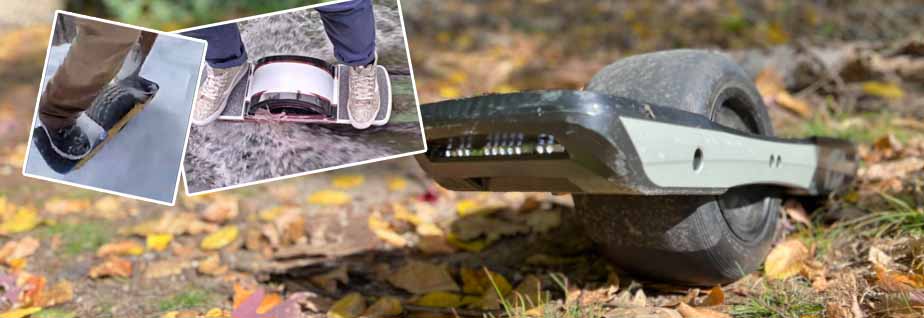
Onewheels are very unique in that the point of contact is one wheel on the ground. Because there is only one area making contact, the Onewheel has an insane ability to squeeze through some of the toughest trails out in the wild. Onewheels can even travel over snow (I still recommend a snowboard if you intend on riding over snow)! The terrain the Onewheel can handle far exceeds even an off-road e-skateboard. While some may be able to go over similar terrain, maneuvering through it makes the difference.
Verdict – Onewheel dominates the terrain category as its maneuverability and wheel base is superior.
Range and Battery Life of a Onewheel and Electric Skateboards
Extensively covered in our Onewheel battery range post, we cover all models of the Onewheel. Generally speaking however you are going to see the range of a Onewheel top out around 30 miles or so for higher end models. This of course is based on ideal conditions and a rider of about 200 lbs.
Because electric skateboard models vary significantly, the battery range will also vary. On average, 20 miles is typical. Meepo boards can reach up to 44 miles on a single charge. Their molicel P42A battery is similarly sized to a CBXR model Onewheel. Onewheels have NMC (Lithium-ion Cobalt Manganese Nickel Oxide batteries.
For a PEV’s (Personal Electric Vehicle), an NMC (Lithium-ion Cobalt Manganese Nickel Oxide) battery is generally a better choice than a Molicel P42A battery. This is because NMC batteries have a higher energy density, which means they can store more energy in the same size and weight package, providing greater range for the PEV.
NMC batteries also have a more stable chemistry than Molicel P42A batteries, which makes them less likely to overheat or catch fire. Safety is a critical consideration for any battery used in a PEV, as it must be able to withstand the stresses of frequent charging and discharging cycles, as well as the high currents and vibrations associated with electric vehicle operation. Assuming you follow proper battery maintenance. Both will have similar lifetimes.
The Molicel P42A is an excellent battery for high-drain applications like vaping and flashlights, an NMC battery is generally a better choice for a PEV due to its higher energy density, more stable chemistry, and better safety profile. However if your goal is range only, there are electric skateboard models that do out perform the Onewheel’s range. Verdict: Tie.
Weight and Portability
Depending on the Onewheel model, a Onewheel can weigh anywhere from 23-36lbs (10-16kgs). Each model is listed within our Onewheel weight post (currently only 3 available Onewheel models). Portability-wise, the Onewheel is definitely awkward to handle. The (dare I say) bulbus wheel in the middle makes it somewhat of a challenge to carry sleekly. There’s hacks for carrying a Onewheel but for the most part they are not as easy as an electric skateboard.
Again for the reasons that models vary, so does the weight of an electric skateboard. A small Penny board style electric skateboard like the Meepo Mini 2 weighs only 16 lbs whereas their larger all-terrain boards (Hurricane Ultra X) can weigh up to 36 lbs. In general terms however, weight and portability-wise, the electric skateboard is superior.
Verdict on weight and portability: Electric Skateboard
Safety Features
Safety features do also vary by electric skateboard models. For the most part, most share common features. Here is the list below
| Safety Feature | Onewheel | Electric Skateboard |
|---|---|---|
| Braking | Regenerative braking / Anti-lock | Regenerative braking / Anti-lock |
| Speed Limit | Pushback Feature* Limits Speed | Speed limiter (governor on some models) |
| Lights | Directional head and tail lights | Few come standard with lighting |
| Deadman Switch | Footpad Sensor Engagement | Remote Trigger |
| Low Battery Warning | Light Indicator & Pushback | Light remote indicators on select models |
Regenerative braking is on both platforms. The only downside here is if you regenerate the battery when its full, it can shut off. For this reason, its ill advised to start downhill on a onewheel at 100% battery power. Having the board cut out downhill would end in a rough nosedive. Because you cannot nosedive on an electric-skateboard (not in the same fashion anyway), e-board takes the win here.
Verdict: Electric Skateboard
Deadman switches work differently on Onewheels and e-skateboards. On a Onewheel, stepping of the front footpad disengages the motor whereas on a typical e-board, the switch is in the remote trigger. Once it stops getting triggered, the motor disengages. Both are similar. They just have different approaches. Verdict: Tie
The lighting does vary by model on electric skateboards. Even on higher end off-road electric skateboards such as a Backfire, the lighting is an attachment. Onewheel has a head and tail light system that reverses with direction (directional system). Verdict: Onewheel
Low battery warnings are felt and visually seen on a Onewheel. Pint and GT models have an LED status bar on the footpad where you can check the battery as you ride. The XR has a blinking power light as well.

When the Onewheel has low power, it will also pushback on the rider letting them know that there is low voltage and its running out of steam. GT models have an audible sound as well. While these safety measures are in place, if you exceed the warnings, it results in a nosedive. With an electric skateboard, it can be dangerous because the motors are dead, but you essentially are still mounted on four wheels.
Verdict: Electric Skateboard
Price Point of a Onewheel and E-skateboard
Check our post on the cost of a Onewheel and the maintence costof a Onewheel. Generally, if you are seeking a competing board, an electric skateboard can far exceed the price or run just as par. Higher end electric skateboards can exceed $3,000. A fully loaded Onewheel GT is around $2500.
Higher end electric skateboards do offer suspension as well as larger batteries. Even for about the same price as a Onewheel GT, you can get an 820wh battery Backfire Hammer Sledge board that will have a better range and speed than the GT (31 miles and a top speed of 31 mph – 50km / 50kpm).
The hub motor within the Onewheel by Future Motion is a 750watt Hypercore motor. This really cannot be changed. In the electric skateboard space, motor power varies. Lower end models can have a single motor that fall below 500 watts whereas the more common boards now run dual motors of 600 watts or more. The more wattage, the more battery drain however within this category, for price and performance, the electric skateboard takes the cake.
Verdict: Electric Skateboard
Culture and Vibe
Because Onewheel has a very standard platform, there have been many aftermarket companies that have been created arround the Onewheel. Similarly, the culture and community is strong because it focuses around the Onewheel. Electric skateboards also have a community however I personally feel its different. Riding through the parks and seeing e-skaters out there, they (generally) tend to be speed enthusiasts where I find that Onewheel is about trick riding, relax riding or trail riding. I just prefer the one wheel skate scene.

Objectively, there is far more abilities to unleash on a Onewheel in regards to tricks, and maneuverability. Electric skateboards do not have much trick riding availability due to their longboard platform. Where electric skateboards thrive is in speed and power.
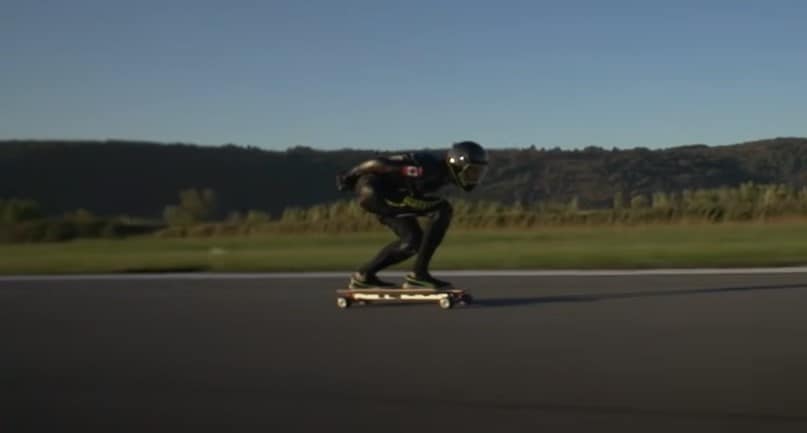
Conclusion
You need to decide what you want to get yourself into. There are other boards not covered in this post that are in a category of their own (such as the Summerboard or a hoverboard which I believe to be more limiting in use). If your goal is to be on the streets more often than trails and if you are into speed then an electric skateboard platform may be for you. EUC’s (electric unicycles) are not covered here but these can go up to 60 mph and you may want to consider these if you truly are seeking speed.
Assuming you operate both the Onewheel and the electric skateboard and understand the basic safety riding principles and ride within the recommended guidelines, arguably the electric skateboard platform is a safer PEV as you are always on four wheels. Don’t let the one wheel of the Onewheel deceive you. Because the wheel is so large, you wont get tripped up on small road debris and can be safe as an electric skateboard. Its always good practice to wear other safety gear (helmet, pads, etc). If you are looking for a great community and aren’t seeking higher and higher speeds, join the Onewheel community. Learn the differences between Pint and GT models and get started. In this community we don’t just ride, we float! Join the float prospective rider.
